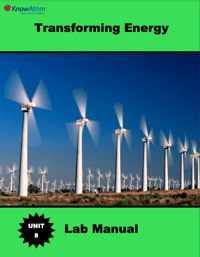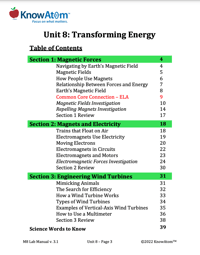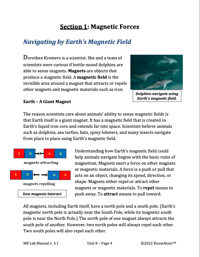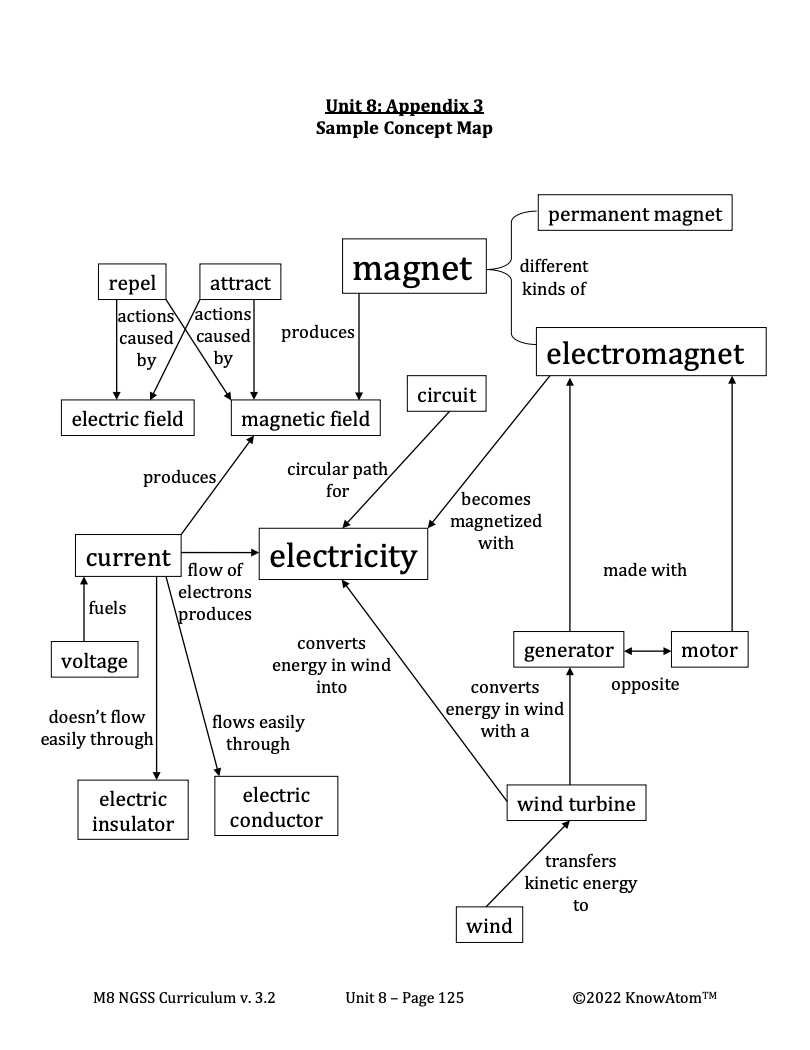Students apply their knowledge of seismic waves to design seismograph prototypes that detect and record high- and low-amplitude seismic surface waves.
In this unit, students focus on the properties of different kinds of wave phenomena and the relationship between waves and energy phenomena. In this lesson, students engineer a simple seismograph to capture wave motion using what they know about the properties of seismic waves produced by earthquake phenomena. This page is a high-level extract of this lesson.
Science background provides teachers with more in-depth information on the phenomena students explore. Below is an excerpt from this section on earthquakes and seismographs.
After the 2012 earthquake in the Indian Ocean, a group of scientists in Southern California decided to study a similar fault, the Newport-Inglewood fault, which stretches nearly 80 kilometers (50 miles) from Culver City to Newport Beach. They wanted to see whether a similarly massive earthquake could happen on faults such as the one in California.
In their research, the scientists made a surprising discovery: earthquakes occur much deeper into Earth than scientists had thought possible, although their findings will require additional research to help them understand how this is possible. “This is a wide-open question that we don’t have a good answer to,” study co-author Asaf Inbal told Science News in 2016.
Scientists need to learn more because it was previously believed that earthquakes only occurred in Earth’s crust because of the different properties of Earth’s four internal layers. The inner core is Earth’s hottest layer, and is made up of a mixture of solid iron and nickel. It is surrounded by an outer core that is made up of a less dense mixture of liquid nickel and iron.
Surrounding the inner and outer core is the mantle, which is mostly molten, semi-solid rock called magma. The mantle is in constant motion, powered by the transfer of energy between Earth’s warmer and cooler materials. Earth’s crust is the hard rock layer of the planet that supports the continents and oceans. The crust is Earth’s thinnest and coolest layer.
Earth’s surface is fragmented into drifting slabs of solid rock, called tectonic plates. As magma moves beneath the crust, it pushes the tectonic plates toward or away from each other. As the plates interact with one another, faults are produced. A fault is a fracture along which the blocks of crust on either side have moved relative to one another parallel to the fracture.
When two tectonic plates suddenly slip past one another, there is a sudden release of energy that causes the ground to shake, producing earthquakes. According to some estimates, 1.3 million earthquakes occur every year.
Most earthquakes are so small that we do not feel them. Occasionally, however, the energy released by an earthquake can dramatically shake the ground, causing buildings to collapse, mudslides to happen, and tsunamis to form.
All earthquakes occur as energy transforms from potential to kinetic energy. As the plates move, they release kinetic energy. The edges around the tectonic plates are jagged, causing them to get stuck on other plates as they move. Because magma is constantly moving below them, the rest of the plate tries to keep moving. As a result, the energy that would normally cause the plates to slide past one another transforms into stored elastic energy. When the force of the moving plates finally causes the jagged areas of the plates to separate, huge amounts of kinetic energy are released.
The earthquakes recorded by Asaf Inbal and the other Southern California researchers were more than 30 kilometers (18 miles) deep, within Earth’s upper mantle. This was surprising to the scientists because the rocks here are so hot that they should flow like hard honey when under stress, rather than accumulate stored energy.
Inbal’s field is seismology, which is the study of earthquakes and seismic waves that move through and around Earth. Seismic waves are the waves of energy caused by the sudden breaking of rock within Earth or an explosion. All waves are disturbances that travel through space and/or matter, transferring energy as they move.
All waves represent repeating patterns. This can be understood by thinking about the anatomy of a simple wave.
The wavelength is the distance spanned by one cycle of the motion of the wave. In transverse waves, it is measured as the distance between two crests (the top of the wave) or two troughs (the bottom of the wave). In longitudinal waves, it is measured as the distance between two compressions (points where the molecules are pressed together) or rarefactions (points where the molecules spread out).
The amplitude is a measure of the wave’s displacement from its resting position. For example, a water wave’s amplitude is its height above the water’s surface. In a longitudinal wave, the amplitude is the amount of compression that occurs as it moves through the medium. In all mechanical waves, the amplitude is proportional to the amount of energy carried. If the amplitude of a mechanical wave doubles, the wave will have four times as much energy.
The frequency of a wave is the number of waves that pass a set point in a given amount of time. A wave with a greater frequency transfers more energy in a given amount of time than a wave with a lower frequency if the amplitudes of both waves are the same.
Students apply their knowledge of seismic waves to design seismograph prototypes that detect and record high- and low-amplitude seismic surface waves.

Prepared hands-on materials, full year grade-specific curriculum, and personalized live professional development designed to support mastery of current state science standards.
Misconception: Earthquakes are rare occurrences and always cause significant damage.
Fact: Earthquakes happen all the time, and most cause little to no damage.
Amplitude : a measure of a wave’s displacement from its resting position
Frequency : the number of waves that pass a set point in a given amount of time
Seismic waves : the waves of energy caused by the sudden breaking of rock within Earth or an explosion
Seismology : the study of earthquakes and seismic waves that move through and around Earth
Transmit : to pass on

How Seismic Waves Travel
Body waves from an earthquake have a higher frequency than surface waves, and they arrive at a seismograph before surface waves. Seismographs are devices with a sensor to detect the ground’s motion along with a recording system that graphs the seismic wave patterns. P-waves are the fastest kind of seismic wave, so they are first to reach a seismograph. They can travel through solids and liquids. They often travel upward through Earth’s layers, shaking the ground in a vertical motion.
S-waves are slower than P-waves, and they can only move through solids, not liquids. Because S-waves are transverse waves, they shake the ground back and forth perpendicular to the direction the wave is moving. Surface waves have a lower frequency than either kind of body wave, and they reach the seismograph last. They move the ground in all directions, and are responsible for most of the damage caused by earthquakes.
Discovering Earth’s Liquid Outer Core
By monitoring arrival times of seismic waves throughout the planet, scientists discovered that S-waves do not reach the opposite side of Earth after an earthquake. They concluded that there must be a liquid outer core.
This was an important discovery because the deepest well ever drilled was 12 kilometers. Earth’s radius is 6,370 km, so the only way to find out the details of Earth’s interior comes from monitoring seismic waves and drawing conclusions. Scientists also concluded that Earth’s crust is made of less dense matter than the mantle.


Measuring an Earthquake’s Energy
A seismograph includes a sensor that detects the ground’s motion and a recording system. Most seismographs have three separate elements so they can capture Earth’s movement in three directions: up-down, north-south, and east-west. A simple seismograph has a frame with a movable arm of some kind. The arm is attached to a pen or other recording device and moves whenever the ground moves. The pen, which is attached to the arm, records the relative motion between itself and the rest of the instrument, which is the motion of the ground.
Many modern seismographs use electronics to measure seismic waves. The scientists in Southern California used more than 5,000 highly sensitive seismographs. The surprisingly deep earthquakes they measured were microquakes, having magnitudes of no more than 2 on the Moment Magnitude Scale. This scale goes from 0-9+ depending on the amount of energy an earthquake releases.
The quakes were so deep that typical seismic sensors closer to the surface didn’t detect them at all. Scientists still don’t know the implications of these deeper earthquakes. One possibility is that the Newport-Inglewood fault could produce a larger earthquake than scientists have predicted.
Another possibility is that deep earthquakes remain small and isolated and so wouldn’t affect surface earthquakes. Scientists will continue to research these questions because many people would be affected by a massive earthquake. The Newport-Inglewood Fault runs underneath an area of Southern California where many people live. And scientists have predicted that the fault could produce an earthquake of a magnitude 7.4. An even larger earthquake would cause significantly more damage to the structures on Earth’s surface, including the homes, office buildings, roads, and bridges in the area.
As the main hands-on activity of this lesson, students design seismograph prototypes that detect and record high- and low-amplitude seismic surface waves. Students define a design problem that they will solve with a sensitive seismograph that can detect and graph seismic surface waves. They identify the criteria and constraints of the problem to help them come up with a design solution. Students build their seismograph and then develop a simple procedure for using an earthquake shake table to test how well their prototype could detect and record seismic waves.
KnowAtom incorporates formative and summative assessments designed to make students thinking visible for deeper student-centered learning.

Standards citation: NGSS Lead States. 2013. Next Generation Science Standards: For States, By States. Washington, DC: The National Academies Press. Neither WestEd nor the lead states and partners that developed the Next Generation Science Standards were involved in the production of this product, and do not endorse it.